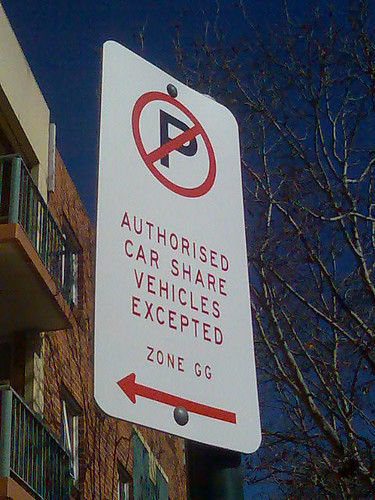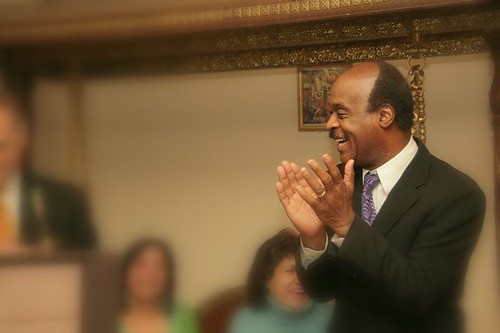Zipcar News: Zipcar founder tinkers with ridesharing and social networking tools; Zipcar’s iPhone App Makes Car-Sharing A Breeze
(Source: Urban Omnibus, Wired)
Urban Omnibus and The Infrastructurist talk to the founder of Zipcar and GoLoco about everything from mesh networks to taxi stands to why “infrastructure is destiny.” In this exhaustive interview published on the Urban Omnibus, you can get to read about Robin’s new social networking project that aims to turn your social network into a travel network. The last couple years she’s been working on GoLoco, which aims to do for ride sharing what Zipcar did for car sharing: to make it easy, efficient and commonplace to share car travel, split costs, and reduce emissions. GoLoco members receive alerts when one of their friends or interest groups is going whether they want to. Here is an interesting excerpt from the interview, that offers a better understanding of how GoLoco works.
So, as you have moved from Zipcar to GoLoco, from car sharing to ride sharing, do you see ride sharing as more of a national set of strategies?
Yes, car sharing only works in dense metropolitan areas or in cases where people don’t need a car to get to work. If you need a car to get to work, you’re going to have to own your own car. The cost of car sharing is too high for a daily commute. But, then again, according to the National Households Consumer Survey, across the nation it costs $24 per day on average that people are spending in America on their car, day in and day out. If I were to tell you that it was going to cost $125 a week to go to work, you would say, no way, I’m not going to do it. But we are doing it – we just don’t realize we’re doing it.
That’s why I did GoLoco – I said, what about all those other people who are feeling similar transportation and mobility pains but they need a car to get to work? Ride sharing is for those people.
Can you give us ride sharing 101? How can GoLoco change how we get around?
The big idea for ride sharing and for GoLoco is to think of your car, your expenses, your friends, and your trips as part of your own personal public transportation system. Your friends and their cars and their trips are ways that you can get around. It builds on the idea of long tail media and long tail economics. Ride sharing is the long tail of public transportation. There are rides that serve little niches of demand way out there, in places where you’ll never see a bus service, or a public transportation service of any kind, but you would see ride sharing, because of the individuals who do go way out there. Basically, if you look at the long tail, ride sharing can meet the needs of small groups of individuals who need to get from a specific origin to a specific destination at a particular time.
I think when we look back at ourselves sitting alone in our 120 square feet of car, driving down these highways with incredible storage costs and incredible operating costs, I think we will look back at how we travel today and be just astounded: astounded at the cost, astounded at the waste. It’s such a wacky idea that we’d want to be alone in our cars spending huge sums of money and all that parking space, when it was less fun and more expensive and kind of crazy.
This is why I did GoLoco. We know that we can’t build our way out of congestion, so if things are increasingly, year after year, getting more congested, there’s only one solution for that: addressing the cost of driving over peak periods.
At $2 per gallon, people spend 18% of their income on their car, and that’s without paying for congestion pricing or tax increases or any other changes to transportation financing coming down the road. But it’s not in the control of any government to effect what the ultimate price of gas is going to be when we have increasing demand from India and China, and arguably peak oil. We have an increasing world population that will continue to drive cars with gasoline on our roads. Ride sharing is going to be significant while we transform our infrastructure to be less car-dependent. While we have such a high cost of car travel in such a car-dependent country, I don’t see another solution. 86% of trips made are alone in a car. Think about standing in a mall, looking at a parking lot. You know that a large number of people there are going exactly where you’re going in the next five minutes.
Click here to read the entire interview.
In other related ZipCar news, there is a new iPhone App from Zipcar which makes car sharing a breeze. The pioneering car-share company has developed an iPhone app you can use to choose, reserve and locate a car on the go – a brilliant move, considering one-quarter of the company’s subscribers have an iPhone in their pocket.
The app tells you what cars are available and uses GPS and Google Maps to direct you to it once you’ve made a reservation. Should the car you’re looking for be lost in a sea of cars in a parking lot, the app will help you find it by sounding the car’s horn. That’s also handy for finding your ride if you’ve forgotten where you’ve parked it. Zipcar is the largest car-sharing service in the world, with locations in 49 U.S. cities in addition to Vancouver, Toronto and London. The company believes the app, which will be available later this summer, will allow it to expand its service and make car-sharing a breeze.
“There are currently 15 million people within a block of a Zipcar service station and about 47 million iPhone customers,” says Luke Schneider, Zipcar’s chief technology officer. “We therefore estimate that our car sharing network could potentially increase to 32 million customers in years to come as a result of our new partnership and expansion into new markets.”





